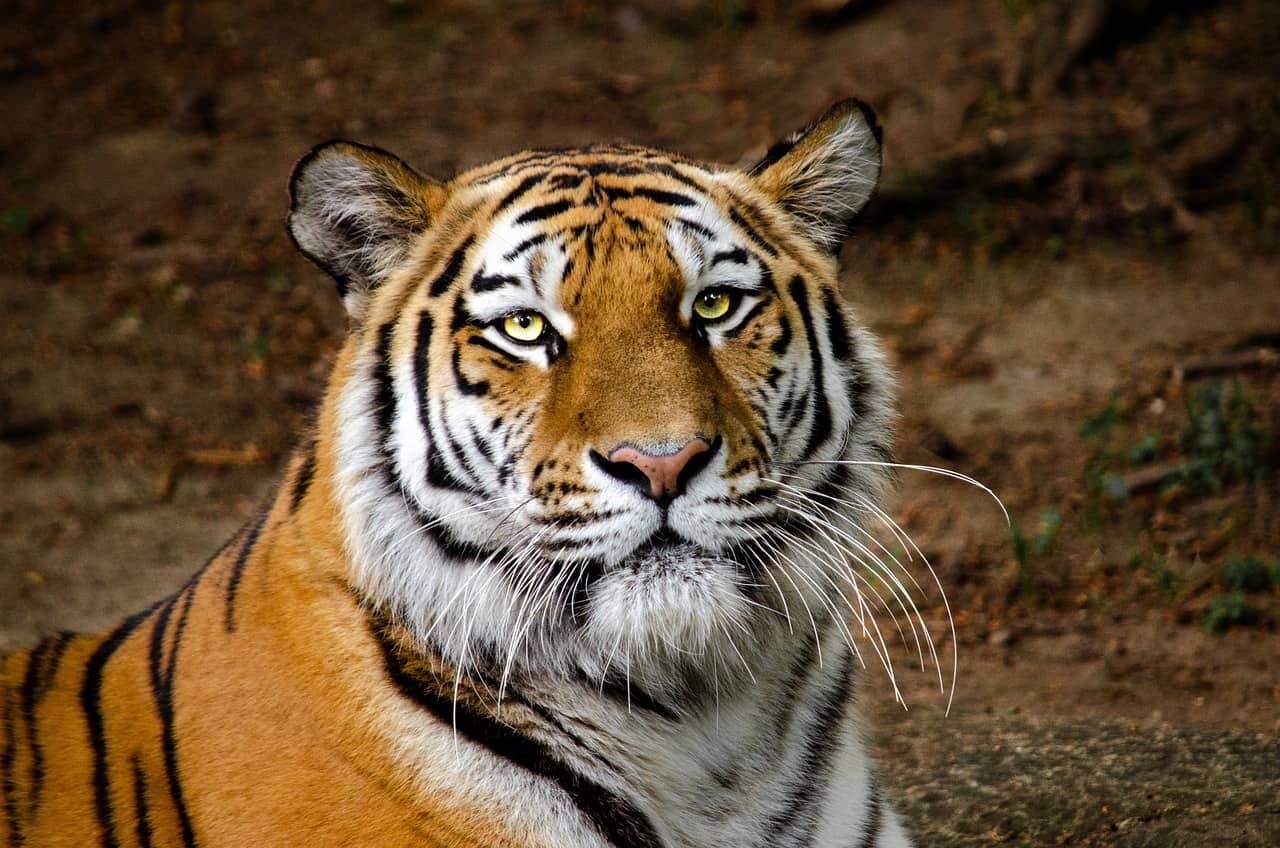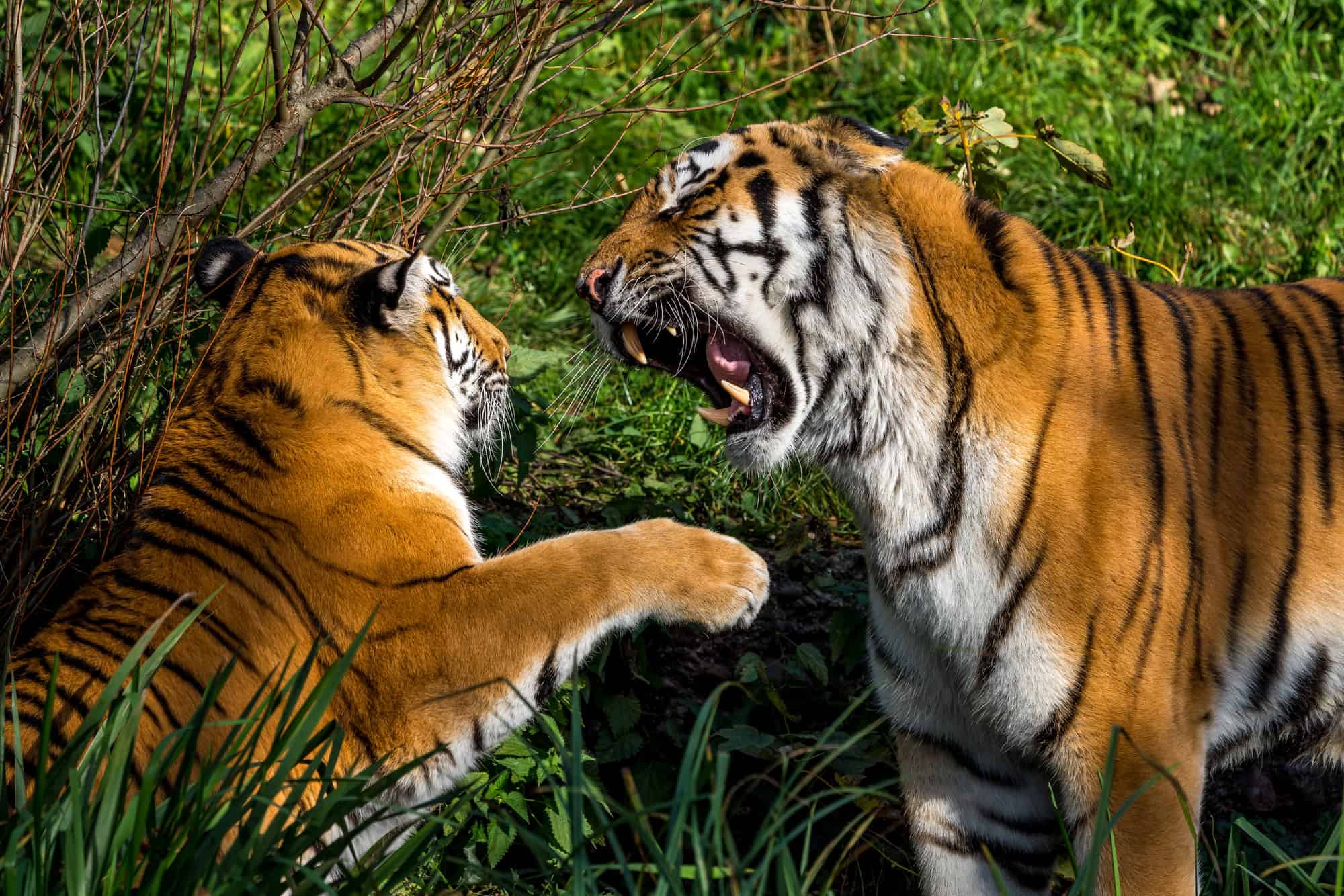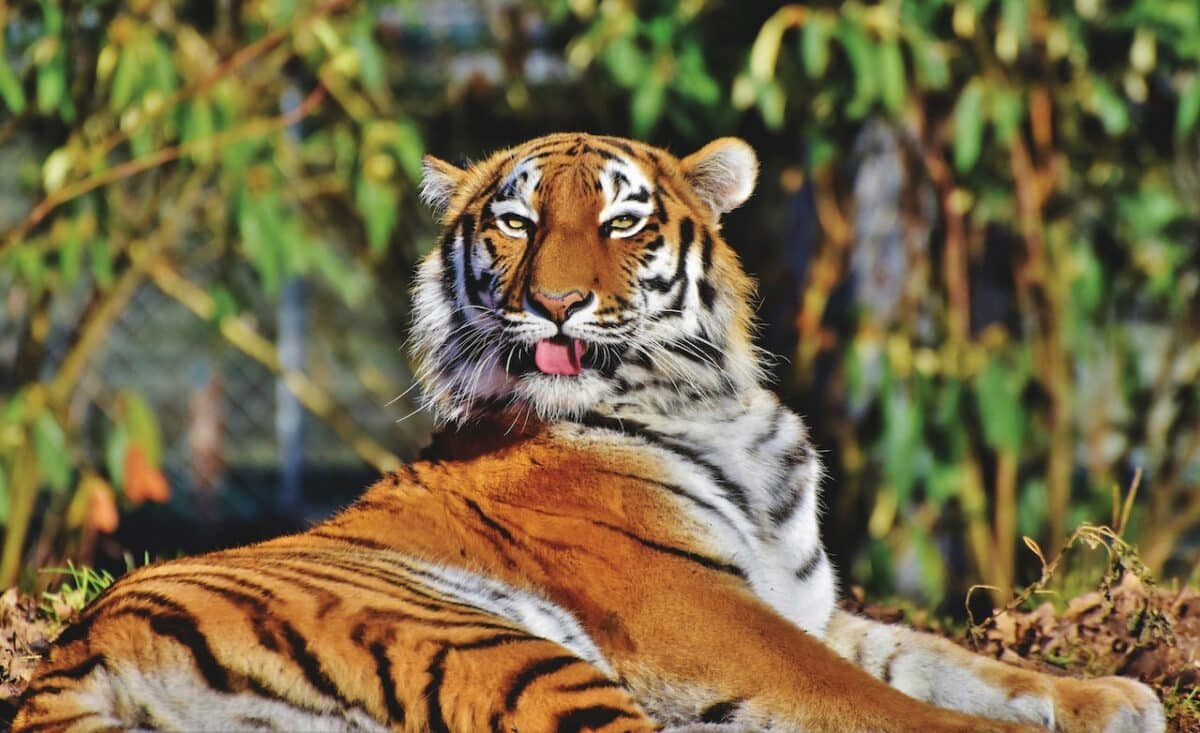Tigers are magnificent apex predators that command both awe and respect. As the largest members of the cat family, these striped carnivores possess incredible strength, speed, and natural hunting instincts that have evolved over thousands of years. While tigers generally avoid human contact in the wild, human encroachment on their habitat and the unfortunate popularity of captive tigers have increased dangerous interactions. Despite their beauty and the allure of close encounters, tigers remain wild animals with powerful predatory instincts. Understanding proper behavior around these majestic creatures is literally a matter of life and death. Here are twelve crucial actions to avoid around tigers, even though some misguided individuals continue to ignore these essential safety guidelines.
Never Turn Your Back on a Tiger

One of the most dangerous mistakes people make around tigers is turning their back on them. Tigers are ambush predators by nature, and in the wild, they attack prey from behind. When you turn your back on a tiger, you’re unwittingly triggering their instinctual hunting response. This is true even for captive tigers that have been hand-raised by humans.
Numerous incidents have occurred when visitors, handlers, or photographers turned away from a tiger momentarily. In 2016, a zookeeper in Florida suffered serious injuries when she turned her back briefly on a tiger during feeding time. Always maintain visual contact with the animal, and if you must move away, back up slowly while continuing to face the tiger. This demonstrates respect for the animal’s predatory nature and significantly reduces the risk of triggering an attack response.
Never Run Around Tigers

Running is perhaps the most dangerous action you can take in the presence of a tiger. These big cats can reach speeds of up to 40 mph (65 km/h) in short bursts, making any human attempt to outrun them futile. More importantly, fast movement triggers a tiger’s chase instinct, similar to how a house cat might chase a moving toy. The difference, of course, is that a tiger weighs hundreds of pounds and possesses lethal hunting capabilities.
Despite clear warnings, visitors to safari parks have been documented exiting their vehicles and running when spotting tigers, creating extremely dangerous situations. In Badaling Wildlife Park in China, a woman was killed in 2016 after exiting her vehicle and being attacked by a tiger. If you ever find yourself in an emergency situation near a tiger, move slowly and deliberately. Making sudden, rapid movements is almost guaranteed to draw the tiger’s attention and potentially provoke an attack.
Never Make Loud Noises or Scream

Tigers have highly sensitive hearing adapted for hunting, and loud, high-pitched noises can startle them or be interpreted as signs of distress similar to prey animals. When startled or agitated, tigers may respond defensively or aggressively. Unfortunately, the natural human response to fear – screaming – is exactly what might escalate a tense situation with a tiger.
Zoo visitors often ignore signs requesting quiet around tiger enclosures, sometimes deliberately making loud noises to get the animals’ attention. In professional settings, experienced handlers maintain calm, steady voices when working with tigers. If you’re observing tigers in a zoo or sanctuary, speak in normal or hushed tones. If you’re in a wilderness area where wild tigers live, maintain quiet to avoid attracting their attention. Remember that tigers’ hunting strategy relies heavily on stealth and surprise – announcing your presence through noise might actually be beneficial in truly wild settings, but should be done calmly, not through screaming or shouting.
Never Approach Tiger Cubs

Tiger cubs may appear adorable and harmless, but approaching them is extremely dangerous for several reasons. First and foremost, a mother tiger is one of the most protective animals in the world and will attack without hesitation if she perceives a threat to her cubs. Mother tigers can remain hidden while monitoring their young, meaning you might not see her until it’s too late. The maternal instinct to protect cubs overrides any other considerations, including past positive interactions with humans.
Despite these dangers, unethical wildlife tourism operations continue to offer cub-petting experiences, giving visitors a false sense of security. Even hand-raised cubs can cause serious injuries, as they play with the same intensity as domestic kittens but with far greater strength and developing predatory instincts. Additionally, these operations typically separate cubs from mothers prematurely, causing psychological damage and contributing to the illegal wildlife trade. A responsible approach is to admire tiger families from a safe, respectful distance, using binoculars or telephoto lenses if wildlife watching, and refusing to patronize businesses that offer direct contact with cubs.
Never Wear Strong Perfumes or Colognes

Tigers possess an extraordinary sense of smell that’s roughly 25 times more powerful than that of humans. They use scent to identify prey, mark territory, and communicate with other tigers. Wearing strong perfumes, colognes, or scented products can elicit unpredictable responses from tigers. Some scents might mask your human smell, causing confusion for the tiger, while others might trigger curiosity or even aggression.
Wildlife photographers and researchers working in tiger habitats know to avoid scented products entirely. There have been documented cases where tigers showed particular interest in tourists wearing strong fragrances, sometimes following them for extended periods. In captive settings, unfamiliar scents can cause stress or territorial responses in tigers. If you’re planning to visit a facility with tigers or trek through tiger territory, opt for unscented deodorants and avoid applying any fragrance products. Additionally, be aware that scented laundry detergents can leave strong odors on clothing that tigers can detect easily.
Never Feed a Tiger Without Proper Training

Feeding tigers is a specialized skill that requires extensive training and strict adherence to established safety protocols. Attempting to feed a tiger without proper training – whether it’s tossing food into an enclosure at a zoo or offering treats to a captive tiger – can lead to dangerous situations. Tigers may associate people with food, leading to aggressive food-seeking behaviors. They might also accidentally injure people during feeding due to their size and strength, even without malicious intent.
Tragically, there have been numerous incidents where well-meaning but untrained individuals were injured or killed while feeding tigers. In 2020, a volunteer at a big cat sanctuary was seriously injured during a feeding session when proper protocols weren’t followed. Professional handlers use specialized equipment and techniques to maintain safe distances during feeding. They’re also trained to recognize subtle changes in tiger behavior that might signal agitation. If you’re visiting a reputable facility with tigers, respect their feeding schedules and never attempt to feed the animals yourself, regardless of how calm they may appear or how much experience you think you have with domestic cats.
Never Stare Directly at a Tiger

Direct eye contact is interpreted as a challenge or threat by many predators, including tigers. Prolonged staring can make a tiger uncomfortable and potentially trigger a defensive or aggressive response. In tiger communication, direct staring is often used as an intimidation tactic before confrontations, which is why it’s best avoided by humans. This doesn’t mean you can’t observe tigers – the key is to do so without fixed, prolonged eye contact.
Wildlife photographers and researchers typically use a technique of periodic glancing rather than sustained eye contact when in proximity to tigers. If you’re viewing tigers in a zoo setting, observe them without staring intently. If you encounter a tiger in the wild (which is rare but possible in certain regions), avoid looking directly into its eyes while maintaining awareness of its location and movements. Instead, watch the animal’s body position and general direction. This approach shows respect for the tiger’s space while reducing the chance of the animal perceiving you as a threat or challenger to its dominance.
Never Approach or Enter a Tiger’s Territory Unguided

Tigers are territorial animals that patrol and defend specific areas. In the wild, these territories can span 7-100 square miles depending on prey availability and the tiger’s gender. Entering a tiger’s territory, especially during breeding season or if cubs are present, is extremely dangerous. Tigers view intrusions as threats and may respond aggressively to protect their space, especially if they feel cornered or if escape routes are limited.
Despite clearly marked boundaries and warnings, there have been incidents where tourists have strayed from designated paths in tiger reserves or even climbed into zoo enclosures. In 2019, a man in India who entered a tiger enclosure at a zoo was severely mauled. If you’re visiting tiger habitats in the wild, always do so with experienced guides who understand tiger behavior and territory. They can identify signs of tiger presence, interpret behavioral cues, and ensure appropriate distances are maintained. In zoos and sanctuaries, respect all barriers and never attempt to get closer than the designed viewing areas allow, regardless of how docile the tigers may appear.
Never Bring Small Animals Near Tigers

Tigers are instinctive predators whose hunting responses can be triggered by the presence of small animals that resemble their natural prey. Bringing dogs, cats, or other small pets near tigers is not only dangerous for the pets but can create hazardous situations for humans as well. Once a tiger’s predatory instinct is activated, it may remain in a heightened state of arousal, potentially redirecting that energy toward humans if the smaller animal becomes inaccessible.
There have been documented cases where visitors to roadside zoos or private facilities brought pets that agitated captive tigers, resulting in the big cats displaying increased aggression or attempting to break through barriers. Professional animal handlers and legitimate conservation facilities strictly prohibit bringing other animals near tiger enclosures. If you’re visiting a facility with tigers, leave pets at home. In areas where wild tigers roam, keep dogs leashed and under close control, as their movement and scent can attract tigers from considerable distances. Remember that a tiger’s predatory response is involuntary – even well-socialized captive tigers cannot override this fundamental instinct when presented with appropriate stimuli.
Never Underestimate a Captive Tiger

One of the most dangerous misconceptions is that captive-bred or human-raised tigers are somehow “tame” or safe to interact with. This false belief has led to numerous tragedies. Tigers retain their wild instincts regardless of their upbringing, and even tigers that have known humans their entire lives can attack without warning. A tiger’s behavior cannot be reliably predicted, and they can switch from apparent calm to aggression in seconds. Their play behavior alone can cause serious injuries due to their immense strength.
The tragic case of Roy Horn (of Siegfried & Roy) illustrates this point perfectly. Despite working with tigers for decades, Horn suffered life-threatening injuries in 2003 when a tiger he had raised from birth attacked him during a performance. Neuroscientists and animal behaviorists emphasize that tigers lack the thousands of years of selective breeding that have made domestic animals relatively predictable in their behavior toward humans. The captive tiger remains fundamentally wild neurologically and behaviorally. No matter how docile a tiger appears or how much experience its handler claims to have, maintaining appropriate safety barriers and protocols is essential. The notion of a truly “tame” tiger is a dangerous myth that continues to lead to preventable injuries and deaths.
Never Take Selfies With Tigers

The rise of social media has fueled a dangerous trend of people seeking photos and selfies with tigers. This has created a market for unethical tourist attractions where tigers are often drugged, mistreated, or kept in inhumane conditions to facilitate these photo opportunities. Beyond the animal welfare concerns, positioning yourself close enough to a tiger for a selfie puts you at serious risk. Tigers can move from apparent calm to attack in a fraction of a second, faster than any human could react.
In Thailand and other Southeast Asian countries, numerous tourists have been injured at temples and attractions offering tiger photo opportunities. Even in the United States, roadside zoos and traveling exhibitions that allow direct contact with tigers have recorded incidents of visitors being bitten or clawed. Wildlife conservation organizations universally condemn these practices, noting that legitimate facilities prioritize animal welfare and natural behavior over visitor photo opportunities. Instead of risking your safety and supporting questionable operations, opt for observing tigers in accredited zoos with proper barriers, or on ethical safaris where tigers can be photographed in their natural environment from a safe distance using appropriate equipment.
Never Assume Barriers Are Sufficient

Tigers are incredibly strong and agile animals capable of jumping up to 16 feet vertically and 33 feet horizontally. They’re also excellent climbers and swimmers. Unfortunately, not all facilities housing tigers maintain adequate containment systems that account for these remarkable physical abilities. Visitors sometimes compound this problem by leaning over railings, sitting on barriers, or allowing children to climb on safety structures, effectively reducing the protection these barriers provide.
In 2007, a tiger escaped its enclosure at the San Francisco Zoo by jumping over a 12.5-foot wall, killing one visitor and injuring two others. Investigators determined the wall was below the recommended height for tiger enclosures. Even in facilities with proper barriers, maintaining a personal safety buffer is wise. Experts recommend staying at least 3 feet back from any barrier at tiger exhibits. Never sit on, lean over, or allow children to climb on safety railings, regardless of how robust they appear. Remember that barriers in reputable facilities are designed with multiple redundancies and safety factors, but their effectiveness can be compromised when visitors don’t respect their purpose and limitations.
Conclusion: Understanding Tiger Safety The Bottom Line

Tigers deserve our respect not just for their beauty and power, but for their essential role in maintaining healthy ecosystems. Understanding proper behavior around these magnificent predators protects both humans and tigers themselves. Each year, negative human-tiger interactions lead not only to human injuries and fatalities but also to the unnecessary killing of tigers that were simply acting according to their nature. By acknowledging and respecting the wild essence of tigers, we contribute to safer interactions and more effective conservation.
Education remains our most powerful tool in preventing dangerous situations with tigers. Whether you’re a tourist considering wildlife experiences, a photographer hoping to capture images of these magnificent animals, or simply a zoo visitor, taking the time to understand tiger behavior and appropriate safety protocols is essential. Remember that even experienced professionals maintain strict safety protocols around tigers. The most meaningful connections with these amazing animals come not from dangerous proximity but from observing them in environments where they can express natural behaviors from a respectful and safe distance. Let’s ensure that tigers remain in our world for generations to come by interacting with them wisely and ethically.
- 12 Things You Should Never Do Around a Tiger (But Some People Do) - August 12, 2025
- 10 Common Animal Myths That You Need to Stop Believing - August 11, 2025
- The Secret Diet of the Worlds Largest Snake and How It Swallows Prey Whole - August 11, 2025

